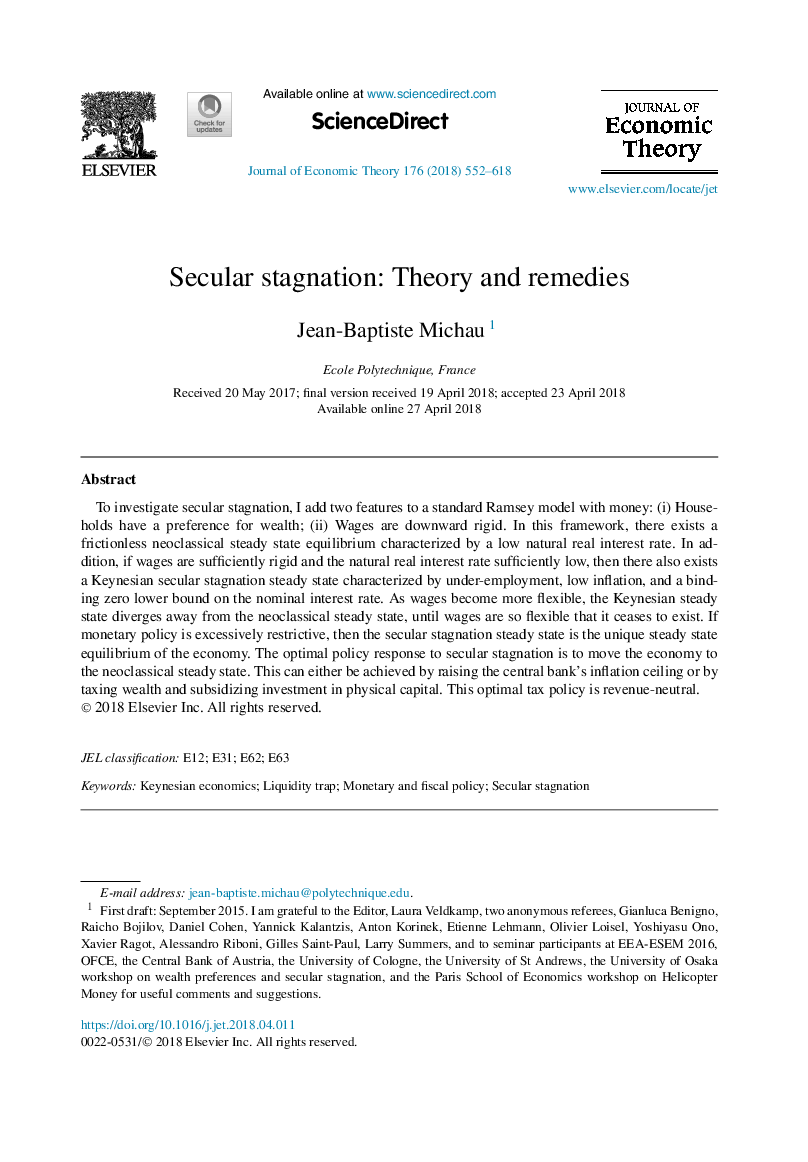| Article ID | Journal | Published Year | Pages | File Type |
|---|---|---|---|---|
| 7359134 | Journal of Economic Theory | 2018 | 67 Pages |
Abstract
To investigate secular stagnation, I add two features to a standard Ramsey model with money: (i) Households have a preference for wealth; (ii) Wages are downward rigid. In this framework, there exists a frictionless neoclassical steady state equilibrium characterized by a low natural real interest rate. In addition, if wages are sufficiently rigid and the natural real interest rate sufficiently low, then there also exists a Keynesian secular stagnation steady state characterized by under-employment, low inflation, and a binding zero lower bound on the nominal interest rate. As wages become more flexible, the Keynesian steady state diverges away from the neoclassical steady state, until wages are so flexible that it ceases to exist. If monetary policy is excessively restrictive, then the secular stagnation steady state is the unique steady state equilibrium of the economy. The optimal policy response to secular stagnation is to move the economy to the neoclassical steady state. This can either be achieved by raising the central bank's inflation ceiling or by taxing wealth and subsidizing investment in physical capital. This optimal tax policy is revenue-neutral.
Related Topics
Social Sciences and Humanities
Economics, Econometrics and Finance
Economics and Econometrics
Authors
Jean-Baptiste Michau,
